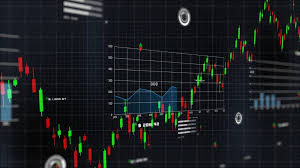
Understanding Crypto Trading Charts: Your Comprehensive Guide
Crypto trading charts are essential tools for traders looking to analyze market trends and make informed decisions. In this article, we’ll explore the different types of charts, how to read them, and how they can enhance your trading strategies. For further knowledge, Crypto Trading Charts visit website resources that can provide in-depth analysis and trading tips.
The Basics of Crypto Trading Charts
At their core, trading charts visually represent the price movements and trading volumes of cryptocurrencies over a specific period. This visual representation allows traders to identify patterns and trends that can inform their trading decisions. The most common types of crypto trading charts include line charts, bar charts, and candlestick charts.
Line Charts
Line charts are the simplest form of trading charts. They plot a single line that connects the closing prices of a cryptocurrency over a specific timeframe. This makes it easy to see the overall trend of the asset. However, line charts lack detail, as they do not display high, low, or opening prices.
Bar Charts
Bar charts offer more information than line charts. Each vertical bar represents the price range for a specific timeframe, showing the opening, closing, highest, and lowest prices. The lines extend above and below the bar, illustrating the highest and lowest prices for that period. Traders can utilize bar charts to better understand price volatility.
Candlestick Charts
Candlestick charts are favored by many traders for their ability to convey a wealth of information in a compact format. Each candlestick represents a specific time frame and comprises a body and wicks (or shadows). The body indicates the opening and closing prices, while the wicks show the highest and lowest prices during that period. Candlestick patterns can indicate bullish or bearish trends, making them invaluable for trading analysis.
Understanding Timeframes
Choosing the right timeframe is crucial when analyzing crypto trading charts. Traders can select various timeframes, ranging from one minute to daily, weekly, or even monthly. Short-term traders (day traders) often use shorter timeframes to make quick trades, while long-term investors may prefer daily or weekly charts to identify broader trends.
Chart Patterns
Recognizing chart patterns is key to predicting future price movements. Various formations can occur on trading charts, and understanding these can significantly impact trading decisions. Some common patterns include:
Head and Shoulders
The head and shoulders pattern typically indicates a trend reversal. It consists of three peaks: two smaller peaks (shoulders) surrounding a larger peak (head). A confirmed head and shoulders pattern signals a bearish trend, while an inverted version suggests a bullish trend.

Triangles
Triangle patterns (ascending, descending, and symmetrical) indicate periods of consolidation. Traders often look for breakout points as triangles can lead to significant price movements in either direction.
Flags and Pennants
Flags and pennants are continuation patterns that appear after a significant price movement. Flags are rectangular-shaped and indicate a brief consolidation period before continuing in the direction of the previous trend. Pennants are small symmetrical triangles and signify a continuation of the existing trend after a rapid price movement.
Technical Indicators
Technical indicators further enhance the analysis provided by trading charts. These tools can help identify trends and potential reversal points. Some commonly used technical indicators include:
Moving Averages
Moving averages smooth out price data to help identify trends over a specific period. A simple moving average (SMA) calculates the average price over a set number of periods, while an exponential moving average (EMA) gives more weight to recent prices, making it more responsive to current market conditions.
Relative Strength Index (RSI)
The RSI measures the speed and change of price movements, indicating whether an asset is overbought or oversold. An RSI above 70 suggests overbought conditions, while an RSI below 30 indicates oversold conditions. Traders often use these signals to identify potential reversal points.
MACD (Moving Average Convergence Divergence)
MACD is a trend-following momentum indicator that shows the relationship between two moving averages. It consists of the MACD line, signal line, and histogram, which traders can use to identify buy or sell signals based on crossovers and divergences.
Reading Crypto Trading Charts Effectively
When reading crypto trading charts, it’s important to approach your analysis with a holistic mindset. Don’t rely solely on chart patterns or technical indicators. Incorporate other market factors, such as news events, market sentiment, and fundamental analysis. A well-rounded perspective will increase the likelihood of making informed trading decisions.
Combining Technical and Fundamental Analysis
While technical analysis focuses on price movements and chart patterns, fundamental analysis evaluates a cryptocurrency’s underlying value and market position. By combining both approaches, traders can enhance their strategies. For example, if a cryptocurrency is experiencing a bullish pattern on the trading chart and positive news regarding its technology or adoption, it may reinforce the trader’s decision to buy.
Conclusion
In conclusion, crypto trading charts are vital tools for both beginner and experienced traders. Understanding the various types of charts, how to read them, and recognizing patterns can significantly impact trading success. Pairing chart analysis with technical and fundamental strategies will help you navigate the volatile world of cryptocurrency trading effectively. Whether you are just starting your trading journey or looking to refine your skills, mastering crypto trading charts is essential for making informed decisions in a fast-paced market.






